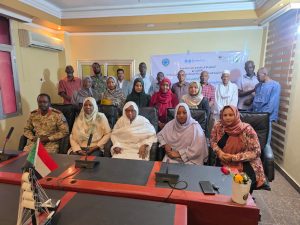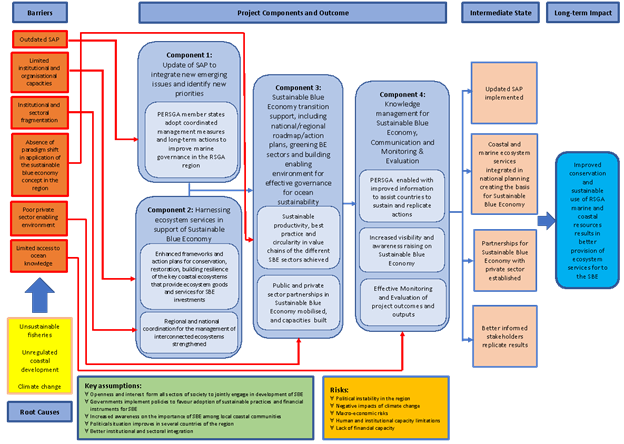The regional project on “Harnessing Marine Ecosystem Services and Transforming to Sustainable Blue Economy in the Red Sea and Gulf of Aden” (HESBERSGA) is supported by the GEF-IW, implemented by UNEP, and executed by PERSGA. The project aims to harness coastal and marine ecosystem services to support transition of current coastal economic development into a Sustainable Blue Economy. HESBERSGA interventions are foreseen to strengthen collaborative management of Red Sea and Gulf of Aden ecosystems, support environmental governance to improve delivery of marine and coastal ecosystem services, accelerate efforts towards achieving SDG14 and transformation to Sustainable Blue Economy in PERSGA region.
Project Focus and Objectives
The growing interest in the potential of a sustainable blue economy in the Red Sea and Gulf of Aden (RSGA) region requires a long-term and cooperative approach for addressing the current and potential future threats to the marine ecosystem, and reversing the losses of marine ecosystem services that underpin local and national economies.
The relatively healthy state of marine habitats in the Red Sea represents an abundant “blue natural capital” resource for the region. The term “blue natural capital” defines the three marine ecosystems (coral reefs, mangroves, and seagrass beds) in terms of the ecosystem services that result from their functional integrity. Hence, preserving current states and restoring natural ecosystems represents an investment in blue natural capital.
Blue economy has broadly focused on promoting sustainable socioeconomic activities that occur in the marine environment and/or generate income and livelihood benefits based on consumption or outputs from the marine environment. The RSGA region has rightly identified the opportunities of the blue economy to help address national socio-economic issues including food security, poverty alleviation, economic diversification and sustainable management of living aquatic resources. Realising the blue economy opportunities in the RSGA region will rely heavily on sustainable and ecosystem-based approaches towards managing national and regional ocean based economic sectors. Underpinning the threats to sustainable economic benefits from marine resources and marine habitats in the RSGA region is the concept of blue economy.
Conserving and developing the RSGA’s valuable habitats offer windows of opportunities to position the region as a global investment hub and a potential leader of sustainable development. An important factor among all the action steps is that the development and allocation of marine and coastal spaces and resources should not lead to erosion of opportunities and rights of communities. At the same time, blue economy sectors that rely on ecosystem services should recognize the role of ecosystem services in sustainability and profitability of their investments, so would strategically adopt good and effective governance, and support conserved and healthy ecosystems for enhanced and sustainable flow of ecosystem services in the region. Therefore, the proposed project aims to harness coastal and marine ecosystem services, and to transform its current coastal economic development into a Sustainable Blue Economy are fully justified. The main objective is fully commensurate with these aims, which focuses on improving delivery of marine and coastal ecosystem services, and accelerate transition to Sustainable Blue Economy.
Project Strategy and Interventions
A sustainable and inclusive Blue Economy should ensure that respective investments deliver long-term social and economic benefits, while protecting and restoring the biodiversity, productivity and resilience of marine ecosystems. It should be based on participatory and effective governance that is inclusive, accountable and transparent and promotes sustainable use in marine areas through far-sighted, anticipatory and preventive spatial planning and implementation of an ecosystem-based approach. Furthermore, it should be based on clean technologies, renewable energy and circular material flows and promote innovation and research in all Blue Economy sectors to achieve zero discharge, enabling at the same time the creation of employment opportunities for blue jobs in the marine and maritime sectors.
Fostering inclusive approach for transforming into Sustainable Blue Economy (SBE), the project interventions will support joined regional efforts to achieve effective environmental governance in blue economy sectors, such as strengthening capacities and regional coordination for environmental governance in different sectors, building circularity, best practices, sustainability principles etc. in the region. Recognizing the rich potential blue economy opportunities in the Red Sea and Gulf of Aden, countries of the region are projecting SBE growth as a strategic option to support economic development in their national visions. Among PERSGA countries, several are LDCs (including Djibouti, Somalia, Sudan and Yemen), which also pursue to undertake SBE in their essential endeavors to tackle poverty and improve livelihood options. Other goals shared by all national visions in the region are to establish tangible SBE investments as part of their plans to support economic diversification and reforms, along with achieving marine environmental conservation and governance objectives.
Based on PERSGA platform, the project will build on the existing SAP taking into consideration: (i) need to update the TDA that will be leading to the updated SAP, endorsed and adopted by the countries of the region, and with the new emerging issues such as circularity, SDGs, climate change and SBE concepts, (ii) update the SAP priorities to include hotspot priorities also in the NAPs in order to strengthen the blue natural capital in the RSGA region, and (iii) map out the capacity building needs for PERSGA to successfully fulfil its commitments to monitor the implementation of the updated SAP. The regional mechanisms can thus act to implement new important principles, such as building circularity in blue economy sectors, providing for tailored guidelines, governance reforms, implementing instruments, enhancing visibility, engaging regional partners, building capacity and developing models adapted to the regional scale and needs.
Involving a complex set of issues and conditions, however, the enabling transformational interventions will aim at overcoming several current barriers and challenges, such as those related to fitting strategies, policies, capacities and access to technology adapting to new developments, and satisfying the evolving needs for effective governance to address environmental concerns, which influence the productivity and sustainability of existing and envisioned blue economy investments that rely on, and also affect marine ecosystem services. Actions proposed under this project also consider the local political, cultural, and socio-economic situation and cultural context, and are tailored according to the specific needs of the RSGA region.
HESBERSGA project will consist of 4 complementary, inter-linked and mutually supportive components designed to collectively deliver on the project’s goal:
Component 1: aims to update the TDA and SAP with a view to creating an efficient tool to respond to critical and emerging new challenges and identify new priorities focusing on the transition towards Sustainable Blue Economy (SBE).
Component 2: will strengthen actions aimed at harnessing ecosystem services which will support development of a Sustainable Blue Economy in the RSGA region.
Component 3: will offer support to RSGA region’s countries, taking in consideration the specific socio-economic and political realities, to undertake a process of transition to a Sustainable Blue Economy, including national/ regional roadmap/ action plans, greening Blue Economy sectors and building an enabling environment for effective governance for ocean sustainability.
Component 4: will address the issues of knowledge management for Sustainable Blue Economy, communication and awareness raising.
The Theory of Change (ToC) diagram shown in the figure below reflects how the HESBERSGA’s will contribute to the achievement of the expected Outcomes under each of the four technical project components and as such, collectively advance the projects. The ToC diagram also shows how the different project’s components will address the listed barriers, thus tackling the root causes of environmental degradation.
Gallery
Latest News
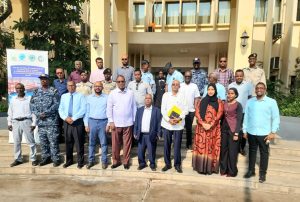
National Validation Workshop on the Revised Djibouti National Contingency Plan …
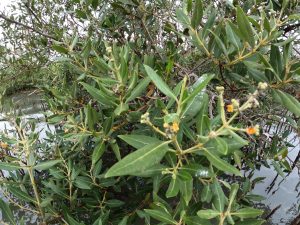
Field Survey for Capacity Building on “Technical Approaches for the …
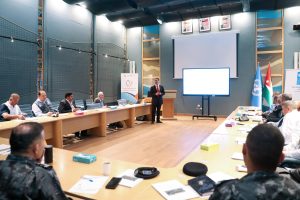
National Workshop in Aqaba Discusses Jordan’s Draft National Plan of …
